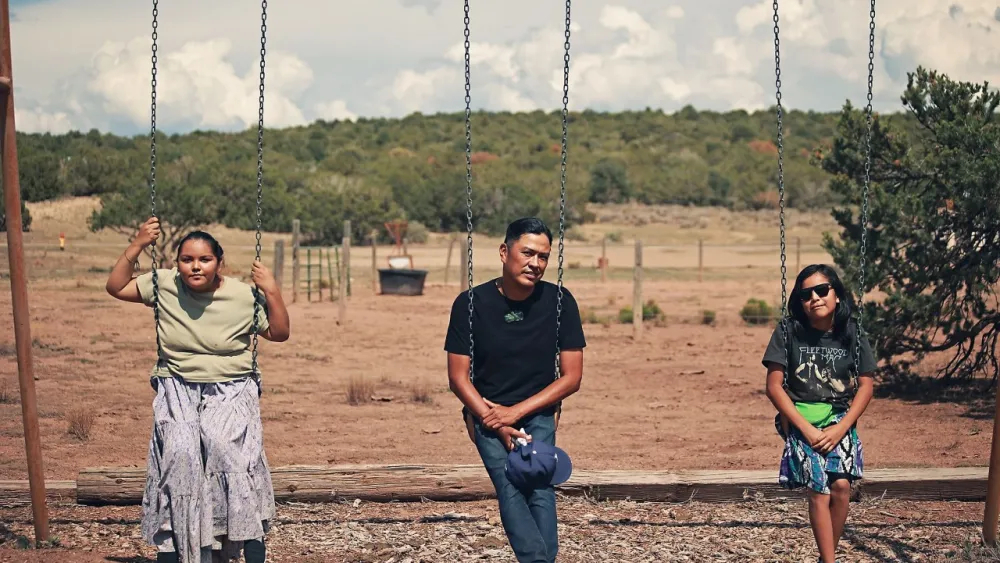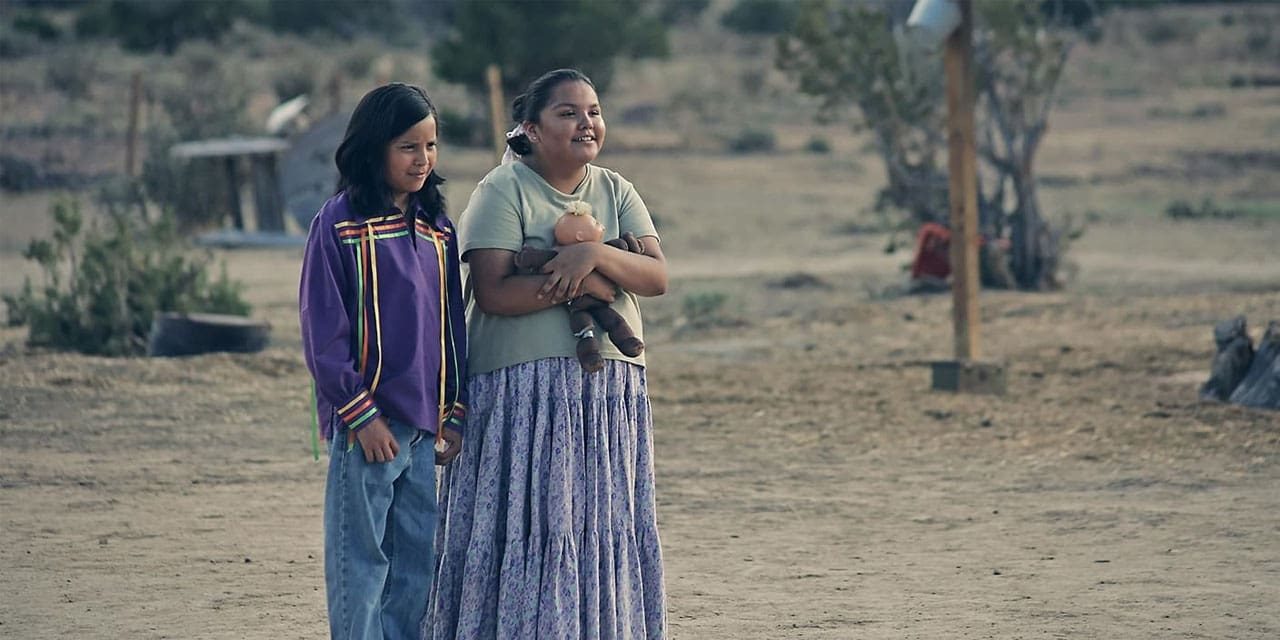Coming-of-age films have an enduring appeal, capturing the essence of self-discovery and growth in a way that resonates with audiences. Netflix’s ‘Frybread Face and Me‘ is a shining example of this genre, skillfully weaving a narrative set in 1990. The story revolves around Benny, an 11-year-old boy from San Diego, and an Indian disconnected from his cultural roots. Obsessed with Fleetwood Mac and secretly dressing up as Stevie Nicks, Benny unknowingly has also learned to conceal his true identity from his father. However, when he is sent to spend a summer on his grandmother’s sheep farm in Arizona and encounters his cousin Frybread Face, Benny embarks on a transformative journey.
The film beautifully unfolds as Benny discovers the importance of family, delves into his heritage, and, ultimately, learns more about himself in the process. Under the skilled direction of Billy Luther, the film unfolds like a vivid tapestry of storytelling. The cast, featuring talents like Keir Tallman, Charley Hogan, and Sarah H. Natani, delivers performances that breathe life into the characters. As the story explores Indigenous experiences, the absence of such narratives from mainstream media begs the question of how many untold stories lie hidden. So, let us see if it is based on a true story or not.
The Real-Life Inspirations of Frybread Face and Me
While ‘Frybread Face and Me’ is not a strictly true story, it bears the imprint of authenticity drawn from the personal experiences of Billy Luther, its writer and director. Luther, who navigated the complexities of his own Indigenous and queer identity during adolescence, channels these struggles into the film’s narrative. However, he has admitted that it is not just his story but the story of anyone who has ever felt marginalized and disconnected. He said, “I felt that this could be a story — and it isn’t just my story. I’ve been on the festival circuit and many indigenous and non-Natives have said, ‘Oh my god, it reminds me of home and my experience of being disconnected from a culture and community!’”

The authenticity of ‘Frybread Face and Me’ is deeply rooted in the meticulous attention to detail that director Billy Luther poured into the set and backdrops. His personal touch is evident as he incorporated specific items from his grandmother’s walls, imparting a genuine connection to his own experiences. Luther emphasized the collaborative effort of the art team, describing the set as a shared vision of the cast and crew who treated the Navajo setting as an extension of their own family homes. This collective approach infused the film with a palpable realism.
When asked about the queerness of the character, Luther openly shared that he delved into the complexities and simplicities of his life, shedding light on a part of himself that he, like many others, felt compelled to hide without fully understanding why. He said, “I really dove into my personal experience and how my aunties and uncles treated me and supported and challenged me in certain ways. Benny is 11 years old in the movie and at that time, it just doesn’t really matter. You’re not necessarily identifying something, but also to the parallel of the grandmother living in Hózhó, which is balance and harmony — and that is Navajo culture, balancing that male and female. It’s equal.”
The film resonates with a broad audience by skillfully navigating universal emotions without adopting a preachy tone. It addresses the inevitable dispersion and dilution of culture resulting from relocations without lamenting it or assigning blame. Instead, it creates a safe space for the audience to acknowledge the sadness associated with the loss of heritage without carrying the burden of responsibility for the broader issue. Similarly, in exploring themes of family, the Netflix production celebrates the universal joys that unite people rather than dwelling on the times when such moments may be absent.
In its fictional narrative, ‘Frybread Face and Me’ intricately weaves the threads of real people, genuine experiences, and authentic stories, creating a world that feels like an essential reality waiting to unfold. As the film progresses, it serves as a poignant reminder that within every individual, there exists a unique journey of self-discovery and cultural connection. The film emerges not just as a cinematic creation but as a mirror reflecting the shared humanity in all its complexity.
Read More: Frybread Face and Me: Where Was the Netflix Movie Shot?


You must be logged in to post a comment.